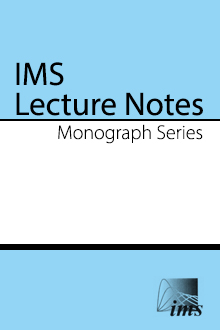Abstract
Lehmann’s ideas on concepts of dependence have had a profound effect on mathematical theory of reliability. The aim of this paper is two-fold. The first is to show how the notion of a “hazard potential” can provide an explanation for the cause of dependence between life-times. The second is to propose a general framework under which two currently discussed issues in reliability and in survival analysis involving interdependent stochastic processes, can be meaningfully addressed via the notion of a hazard potential. The first issue pertains to the failure of an item in a dynamic setting under multiple interdependent risks. The second pertains to assessing an item’s life length in the presence of observable surrogates or markers. Here again the setting is dynamic and the role of the marker is akin to that of a leading indicator in multiple time series.
Information
Digital Object Identifier: 10.1214/074921706000000473


